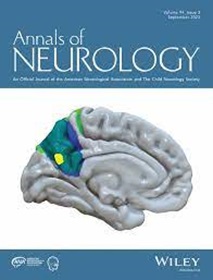A Prediction Rule for the Dystonic Spread of Blepharospasm: A 4-Year Prospective Cohort Study
Abstract
Objective
Blepharospasm (BSP), focal dystonia with the highest risk of spread, lacks clear understanding of early spreading risk factors and objective prognostic indicators. We aimed to identify these risk factors through clinical and electrophysiological assessments, and to establish a predictive model for dystonic spread in BSP.
Methods
We prospectively followed BSP patients for 4 years, collecting data on dystonic spread, and conducting electrophysiological evaluations. The blink reflex, masseter inhibitory reflex, and trigeminal somatosensory evoked potential were assessed. Univariable and multivariable Cox proportional hazard regression models were used to assess clinical characteristics associated with BSP dystonic spread. A predictive model was constructed using a nomogram, and performance of the model was evaluated using the area under the receiver operating characteristic curve.
Results
A total of 136 enrolled participants (mean age 56.34 years) completed a 4-year follow-up. Among them, 62 patients (45.6%) showed spread to other body regions. Multivariable Cox regression analysis showed that a high Hamilton Anxiety Scale score (hazard ratio 1.19, 95% confidence interval 1.13–1.25, p < 0.001), prolonged trigeminal somatosensory evoked potential mandibular branch P1-N2 peak interval (hazard ratio 1.11, 95% confidence interval 1.02–1.21, p = 0.017), and elevated trigeminal somatosensory evoked potential mandibular branch P1-N2 peak amplitude (hazard ratio 1.26, 95% confidence interval 1.12–1.41, p < 0.001) were independent risk factors for BSP dystonic spread within 4 years. Combining these factors, the predictive models demonstrated excellent discriminative ability, with the receiver operating characteristic curve score being 0.797, 0.790, 0.847, and 0.820 at 1, 2, 3 and 4 years after enrollment, respectively.
Interpretation
We established a predictive model with significant value for anticipating dystonic spread in BSP, offering crucial evidence. These findings contribute essential insights into the early clinical identification of the development and evolution of BSP diseases. ANN NEUROL 2024;96:747–757

| 公司名称 | 产品信息 | 采购帮参考价格 |
|---|
 求助内容:
求助内容: 应助结果提醒方式:
应助结果提醒方式:


